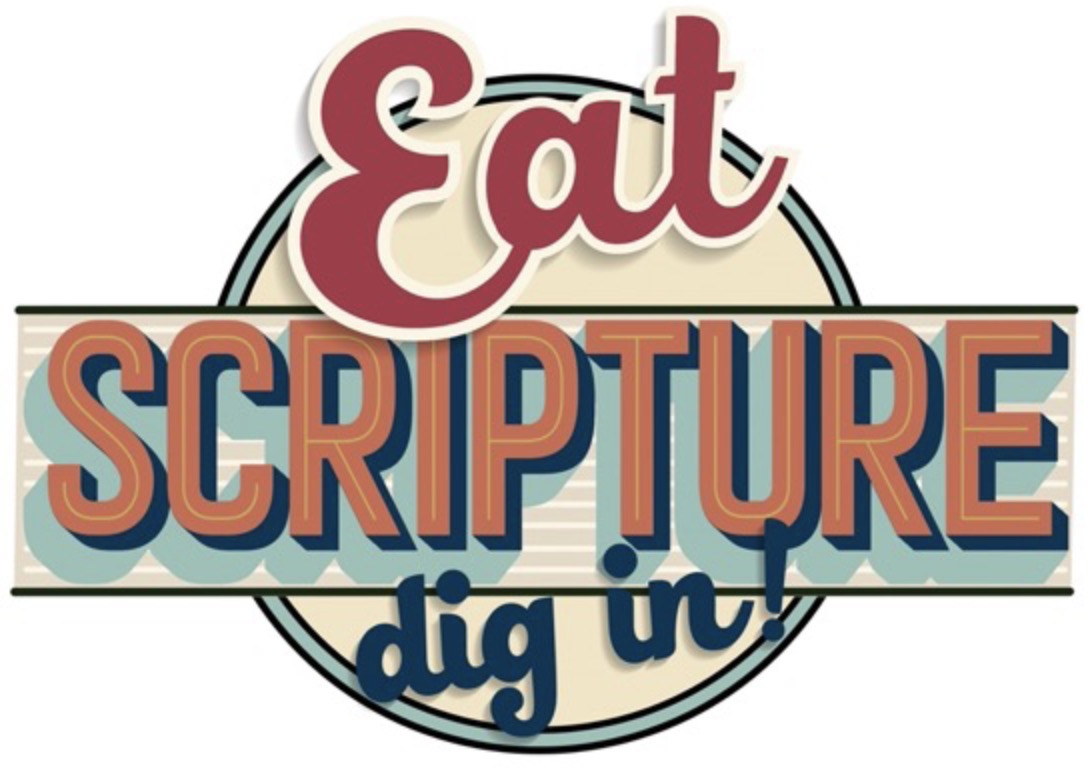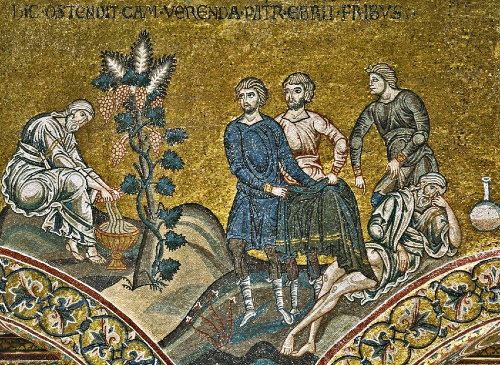Sometimes, the Jesus-story comes jumping out at you when you are reading what is a completely different story altogether. Take the story of Abraham sacrificing Isaac. Our minds long to associate that story with the story of Jesus dying a sacrificial death according to God the Father’s plan. But, in fact, that story is nowhere referenced in the New Testament as typologically connected to Jesus’ sacrifice and resurrection. Still, it is widely assumed in Christianity that this connection was intended by the Holy Spirit. The primary clue of a promised son through whom all the world will be blessed dying at the hands of his loving Father is just too much for attentive readers to deny. When this causes one to get into the details of the story, even more connections begin to show themselves: (1) three-days, (2) God provides the sacrifice, (3) Abraham tells the servants that both he and the boy will return after they worship, (4) the son carries his own sacrificial wood on his back, (5) this being the first passage in Scripture where the word “love” is used in the original language, and others. Before long, a case is made that is just too overwhelming to deny.
So this begs the question: If this clear reference is in the Old Testament and yet is never acknowledged by the New Testament writers as such, what other stories have they made no mention of that are likely to be clear with only a little bit of attention? The leading interpreters in the early church had no qualms about finding Jesus in any and every passage of scripture since they took Jesus’ teaching about himself in “all the scriptures” (Luke 24:27) very literally. Although their methods for finding connections to the Christ story are rarely (by that I mean, almost never) what is taught in today’s formal exegesis courses, they very often saw the Jesus story coming out in some places where the connective tissue was, again, just too obvious for them to dismiss.
Sometimes we have similar experiences when reading scripture—or, if we do not, we should. At times we read a story that seems to have a truly big hint embedded in it—the kind of hint that would make one’s mind go straight to Jesus in the gospels. One place that seems to stand out strikingly is in the account of the ten plagues which God sends against Egypt to free His people from bondage (Ex. 7-11). The final two plagues are three days of darkness and the death of the firstborn. Now that is interesting. The two final plagues unleashed on Egypt before all God’s people are released from bondage involve a three-day period of darkness and the death of firstborn sons. Then the people are practically kicked out of slavery and sent away with donkeys burdened with valuables of their former captors. If that gets one’s attention at all, it may prompt one to go back and see if there is any significance in the other plagues, such as plague number one—turning water to blood. It just so happens that the first miracle Jesus ever does in his ministry of freeing people from spiritual bondage is turning water to wine (wine symbolizes Jesus’ blood, according to Jesus). Actually, all of the plagues are connected in some way to what Jesus is doing in His earthly ministry.
Another very big hint when looking at Old Testament texts is the dramatic and immediate reversal of fortunes for one who loves God dearly but is in a position of facing almost certain death at the hands of an evil foe. Virtually overnight, it seems, the one in desperate circumstances becomes a respected authority figure, walking in more power than ever, because of God’s mighty hand to both save and establish him. Often these cases involve being in a pit or a cave of some kind, or someone literally or potentially “hanging on a tree” as the dramatic reversal takes place. Such examples include Joseph, Daniel, Mordecai, David, and Elijah. Three of these even include an obvious three-day period associated with the time of reversal. Two include death on a tree or the potential of such. Three include the protagonist being found in a cave or pit at the time of reversal. Three of them become second in power over the known world in an overnight, meteoric rise. Numerous other clues are associated with each one that bring the Jesus story to the fore.
But the examples are far from over in any of the above cases and dozens of others. Sometimes they come out in the strangest ways, and yet, when they are seen, the Jesus story soon emerges and an access point is gained by which the entire Old Testament story can be viewed through a redeemed lens.
Take the very strange story of Jacob stealing the father’s one great blessing from Esau in Genesis 27. One of the biggest hints of the story has to be when Jacob dresses and makes himself feel just like his brother. He even smells like his brother. For all practical purposes, he has taken on his brother’s likeness so that he might go before their father and receive the greatest blessing. He gives an offering of food to his father (two goats!) which greatly pleases him and he ends up bestowing the blessing originally intended for Esau on his younger brother, Jacob. This bestowal of blessing by the father makes the older brother so jealous that he wishes to kill his younger brother at virtually any cost. Even though the entire story is fraught with self-seeking actions and ungodly motives, God uses all of the characters, even in their desires to strive for personal gain, to tell the one story of the Son who will take on the likeness of all his sinful brothers, make a perfectly-received offering to the Father, be threatened with death, and then leave his family to find a bride in a distant land.
The big hints are everywhere. Creating your own “short list” of different aspects of Jesus’ life and ministry can be helpful for recognizing when you are stumbling across and Old Testament type of the Jesus-story. These can include (but are by no means limited to) things like:
· Miraculous birth
· Conception in questionable moral circumstances
· Jealousy of an older brother (or political superior) for the favor received by the younger (or lesser ranked) protagonist
· Designated three-day period
· Bread and wine reference
· Death on a tree/pole
· Overwhelming odds overcome on the basis of God’s power alone
· Main character in a cave/pit/hole in association with potential death
· Immediate and dramatic reversal of circumstances
Hopefully, this tip will help you see some interesting connections in some places you had not considered. Just keep your eyes open because some of the hints seem as plain as day . . . like when God opens up Adam’s side to make a bride out of his own body. Think about it . . .





